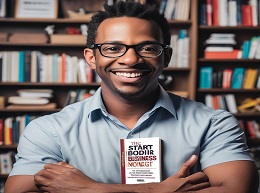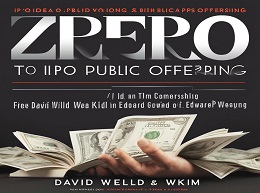How to Start a Business without Any Money

Unveiling the Secrets of Starting a Business with No Capital: A Review of "How to Start a Business without Any Money"
Starting a business often feels like a distant dream for many aspiring entrepreneurs, particularly those with limited financial resources. "How to Start a Business without Any Money" demystifies this process, providing a roadmap for launching a successful venture on a shoestring budget. This book is a treasure trove of practical advice, motivational anecdotes, and actionable steps that empower individuals to transform their business ideas into reality without the need for substantial upfront investment.
The Core Premise: You Don’t Need Money to Start
The book’s central thesis is clear and empowering: lack of capital should not be a barrier to entrepreneurship. It challenges the traditional notion that significant financial resources are a prerequisite for starting a business, presenting alternative strategies to overcome financial limitations.
Embracing a Resourceful Mindset
A significant portion of the book focuses on cultivating a resourceful mindset. The author emphasizes the importance of creativity, perseverance, and strategic thinking in overcoming financial constraints.
Example: The story of Sara Blakely, the founder of Spanx, is highlighted to illustrate this point. Blakely started her billion-dollar business with just $5,000, focusing on innovative product design and grassroots marketing to build her brand without substantial initial investment.
Practical Strategies for Launching a Business on a Budget
The book offers a plethora of practical strategies that aspiring entrepreneurs can implement to start their businesses with minimal financial resources. These strategies are categorized into several key areas, each supported by real-world examples.
Leveraging Skills and Talents
One of the most effective ways to start a business without money is to leverage your existing skills and talents. The book encourages readers to identify their strengths and consider how these can be monetized.
Example: John, a graphic designer, started offering freelance design services on platforms like Upwork and Fiverr. By building a portfolio and gaining initial clients, he was able to generate income that he later reinvested into his business to expand his services.
Utilizing Free and Low-Cost Tools
In today’s digital age, there are countless free and low-cost tools available that can help entrepreneurs manage and grow their businesses. The book provides a comprehensive list of these resources, from website builders and social media platforms to project management and accounting software.
Example: Jane used free website builders like Wix and WordPress to create an online presence for her handmade jewelry business. She also utilized social media platforms for marketing, significantly reducing her initial costs.
Building a Network and Seeking Mentorship
Networking and mentorship are crucial components of entrepreneurial success, especially when financial resources are limited. The book offers insights on how to effectively build a network and seek guidance from experienced mentors.
Networking for Opportunities
Building a strong network can open doors to opportunities that would otherwise be inaccessible. The book advises on how to approach networking strategically, whether through industry events, online forums, or local business groups.
Example: Mike attended local business meetups and industry conferences to connect with potential partners and clients. Through these connections, he secured several key partnerships that provided the resources and support needed to grow his tech startup.
Finding and Leveraging Mentors
Mentorship can provide invaluable advice, support, and resources. The book outlines steps to find and approach potential mentors, as well as how to cultivate and maintain these relationships.
Example: Emily sought mentorship from a seasoned entrepreneur she met at a local business event. Her mentor’s guidance on navigating the challenges of startup life was instrumental in helping her avoid common pitfalls and accelerate her business’s growth.
Creative Funding Alternatives
While the book emphasizes starting without money, it also recognizes that some capital might eventually be necessary. It explores various creative funding alternatives that don’t rely on traditional bank loans or venture capital.
Bootstrapping
Bootstrapping involves using personal savings, reinvesting profits, and maintaining a lean operation. The book provides tips on how to effectively bootstrap a business, including managing cash flow and prioritizing essential expenses.
Example: Tom bootstrapped his e-commerce business by reinvesting the profits from initial sales into inventory and marketing. This approach allowed him to scale gradually without taking on debt or external investment.
Crowdfunding
Crowdfunding has become a popular way to raise funds for new ventures. The book explains how to launch a successful crowdfunding campaign, including creating a compelling pitch, setting realistic goals, and engaging with backers.
Example: Lisa launched a Kickstarter campaign to fund the production of her eco-friendly travel products. By leveraging her social network and creating an engaging campaign, she exceeded her funding goal and gained valuable market validation.
Marketing on a Shoestring Budget
Effective marketing is essential for business growth, but it doesn’t have to be expensive. The book offers strategies for marketing on a shoestring budget, utilizing both traditional and digital channels.
Leveraging Social Media
Social media is a powerful tool for reaching a large audience at little to no cost. The book provides tips on how to create engaging content, build a following, and convert followers into customers.
Example: Rachel grew her fitness coaching business by sharing valuable content on Instagram and YouTube. Her engaging videos and posts attracted a large following, many of whom became paying clients.
Content Marketing
Content marketing involves creating and distributing valuable content to attract and engage a target audience. The book explains how to develop a content strategy that drives traffic and builds brand authority without significant financial investment.
Example: David started a blog and YouTube channel offering financial advice. By consistently publishing high-quality content, he built a loyal audience and established himself as an authority in the personal finance niche, leading to various monetization opportunities.
Building and Scaling Your Business
The book not only focuses on starting a business but also on building and scaling it sustainably. It covers essential aspects of business development, including customer acquisition, product development, and operational efficiency.
Customer Acquisition and Retention
Acquiring and retaining customers is critical for business success. The book provides strategies for building a loyal customer base, including personalized service, loyalty programs, and leveraging customer feedback.
Example: Anna implemented a referral program for her online fashion boutique, offering discounts to customers who referred friends. This not only helped acquire new customers but also encouraged repeat purchases.
Continuous Improvement and Innovation
To remain competitive, businesses must continuously improve and innovate. The book emphasizes the importance of staying attuned to market trends, gathering customer feedback, and iterating on products and services.
Example: Mark regularly surveyed his customers to gather feedback on his software product. By implementing their suggestions and continuously improving the software, he kept his customers satisfied and ahead of competitors.
Empowering Entrepreneurs to Take the Leap
"How to Start a Business without Any Money" is a must-read for anyone aspiring to become an entrepreneur but feeling held back by financial constraints. The book is packed with actionable insights, practical examples, and motivational stories that demonstrate how resourcefulness, creativity, and strategic thinking can overcome the barrier of limited capital.
By following the guidance and strategies outlined in this book, aspiring entrepreneurs can confidently take the leap into business ownership, knowing that success is not solely determined by the amount of money one starts with but by the drive, ingenuity, and perseverance they bring to the table. Whether you are at the idea stage or looking to scale an existing venture, this book provides the tools and inspiration needed to turn your entrepreneurial dreams into reality.













